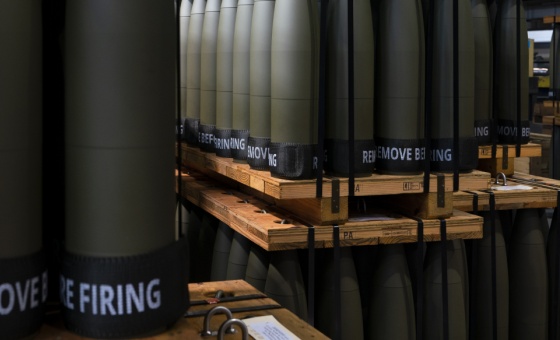This is the last article you can read this month
You can read more article this month
You can read more articles this month
Sorry your limit is up for this month
Reset on:
Please help support the Morning Star by subscribing here
FOR ALL of us the virus that the World Health Organisation officially names in the International Classification of Diseases (ICD) as “Severe acute respiratory syndrome coronavirus 2 (SARS-CoV-2)” has dominated the way we live.
Meanwhile the natural world around us has carried on with its own complicated life patterns, with a mix of good news stories and some disasters. I’ve mentioned many of them in my weekly Ramblings.
There is no doubt that our climate catastrophe has delivered challenges just as serious for the natural world as Covid is for us humans.
2021 was not an easy year for our wildlife. A handful of extreme weather events and untimely seasonal climate events caused devastation and sometimes chaos in various habitats.
One pleasant surprise early in the year was an 800kg (125st) Arctic walrus that arrived off our coast. I reported her or his arrival, along with the news that bottle-nose dolphin numbers were increasing in our northern waters.
The walrus had come many miles from its usual Arctic home. Inn my column I speculated if it would return to the polar regions while it hopped about being seen in Ireland and Wales with excursions to France and Spain.
Its last reliable sightings were in late September when it turned up in Iceland, a good way nearer its home waters. Let’s wish it a safe journey back to its icy home.
2021’s weather started with mainly warm winter months. Low levels of rainfall and gale-force winds all contributed to various natural disasters, sometimes bringing devastation to much-loved landscapes as well as the animals and plants that made those landscapes home.
The climate crisis is making some forms of extreme weather events the new normal. Mini-heat waves are now common while monsoon rainstorms and the resulting flash flooding frequently make headlines.
Wildfires and extreme storms once only reported from abroad are now destroying much British woodland and it isn’t just our woodlands that are going up in flames.
An unusually dry March and even drier April saw moorland wildfires all over. Among other locations, huge blazes swept through the Mourne Mountains in Northern Ireland and Marsden Moor in Yorkshire.
Moors and peat bogs were already under many threats and these too suffered many fires that destroyed already declining rare plant and bird populations. Hares were particularly badly hit. The fires also release much locked-up carbon.
The climate catastrophe even steals away some parts of our land itself. In Dorset prolonged periods of dry weather alternating with heavy rainfall combined with persistent coastal erosion caused the largest slippage here for 60 years.
Three-hundred metres of cliff at Golden Cap simply slid into the sea where it will be washed away by future tides.
Late frosts in April and May affected all sorts of blossoms. Fruit-growers reported the worst harvests for 20 years. This frigid spring hit hard at populations of many insects including our colourful butterflies.
Those that did manage to survive were late to emerge which meant unseasonal conditions and the challenges that they bring.
When summer did arrive it was hot — further evidence of a long-term trend of rising temperatures. Indeed 2021 is expected to be within the top 10 warmest summers on record.
By September it was feared that dry conditions would cause some trees to shed their leaves early and jeopardise the display of autumn colour.
Fortunately, there was just enough rain to ensure a vibrant array of forest colours from late October.
In November, Storm Arwen ripped through the north of the country, causing widespread devastation. The storm toppled hundreds of irreplaceable trees, primarily in Wales, the Lake District and Northumberland.
Milder winters allow tree diseases, such as ash dieback, to take hold with thousands of trees affected and having to be felled.
Some good news came in the shape of the long-extinct beaver re-establishing itself in many rivers. Beavers on Exmoor had their first kit just 18 months after the pair were first introduced to their new home.
Once common all over Britain, the beaver became extinct at least 400 years ago. Now it is back with a vengeance and proving to be the ideal natural way to improve and control our sometimes distressed rivers.
Other rare beasts and plants have been seen for the first time or in unfamiliar places. Many are migrating to the warmer north.
My daughter-in-law spotted an amazing beast. It was a wasp spider (Argiope bruennichi) — a spider that disguises itself as a wasp.
Another rare spider was spotted in we woodland at the National Trust site at The Vyne in Hampshire. This was the angular orbweaver (Araneus angulatus). Normally this species is only found on the southern coast of England. An endangered spider Zora silvestris was also discovered at Clumber Park, Nottinghamshire.
Moving to something larger, it has been a great year for seals — our largest breeding mammal if you exclude whales and dolphins. There were record numbers of seal pups born in 2021.
A record number (190) of grey seal pups were counted at Strangford Lough in Northern Ireland, and Orford Ness in Suffolk welcomed 200 grey seals looking for a new home. It seems seal numbers are increasing thanks to a lack of predators and lots of food.
Early summer proved a good time for native orchids. Carpets of pyramidal orchids are an amazing, and sadly still rare site. Bee orchids too had a good summer. Both species were boosted by a dry April and warm June.
Our latest flowering orchid — autumn lady’s tresses, could be seen in their thousands at grasslands and sand dunes in southern England and Wales.
After the flowers of spring and summer come the colourful and occasionally delicious fungi. This year’s warm and damp autumn with little or no frost meant it was a bumper year for grassland fungi.
We’ve seen a proliferation of various types of waxcaps, which thrive in healthy grasslands that have not been ploughed or fertilised. Much of their habitat has been lost since World War II but the National Trust found 17 species of waxcap in one of its meadows in Shropshire. Several new waxcap species were also discovered at Hardcastle Crags in Yorkshire.
It was another topsy-turvy year for terns at the coast. In some places Arctic tern numbers rebounded where wardens protected nesting sites from predators.
Unfortunately, little terns did not fare as well. High tides flooded their nests in some cases, causing the birds to completely abandon traditional nesting sites.
The Big Butterfly Count, run by the Butterfly Conservation, recorded its lowest-ever numbers this year. It revealed that 60 per cent of species had lower numbers since last year. Many butterfly species emerged later during the summer due to a cool spring.
Many of Britain’s most precious trees have been damaged by Storm Arwen as its gale force winds brought down thousands of trees across the north of England and Wales.
Tens of thousands of larch trees will also be felled across the Lake District after an outbreak of the disease Phytophthora ramorum.
I’ll finish on what might be the worst wildlife story of 2021. Large numbers of puffins, guillemots and other sea birds are being found dead and washed ashore.
Just weeks ago dozens of dead or barely alive puffins were washed ashore up on Orkney’s coastline. Experts are investigating the discovery of the birds at Scapa and other beaches in recent days.
They do not yet know why the birds are dying but they believe it is unlikely to be avian flu that is devastating poultry farms and small flocks all over the country, rather climate warming and the industrial fishing stripping of the puffin’s favourite diet the sand eel.
The tragic events on Orkney follow up a large number of seabirds, including puffins, guillemots and razorbills being found dead all along our eastern coast earlier this year.
As I write this the Met Office forecasters are predicting our hottest December daytime temperature since records first began. 17 degrees, they say, so it seems climate catastrophe isn’t about to stop now.
Do what you can to protect the countryside and do have a happy new year.











